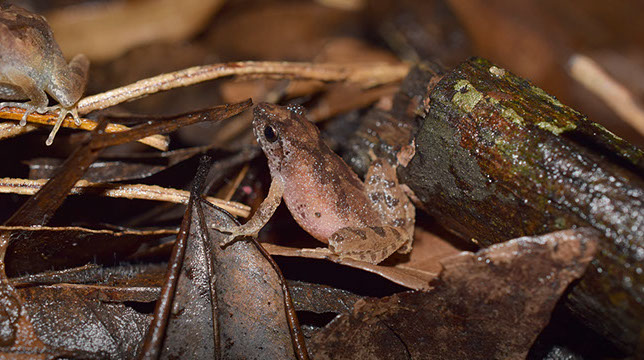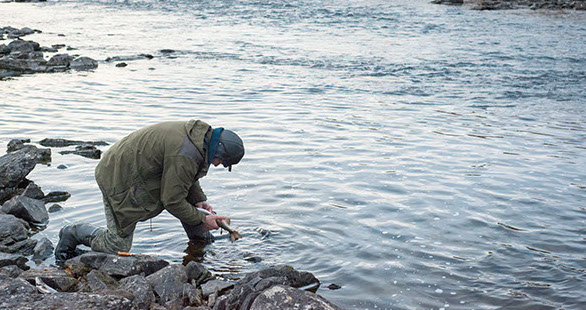
The Planet’s Creatures Need A Better Response
An HKU-led team of international climate change researchers calls for a new approach to managing the impact of climate change on species distribution.
Animals around the globe have been moving towards cooler climates above and beyond natural shifts, as well as towards the two poles, in a development that is ringing alarm bells among ecologists.
“This is not just a problem for animals,” said Dr Timothy Bonebrake of the School of Biological Sciences. “One of the things we’re finding is that tropical fish are moving into more temperate areas and that has real consequences for people, particularly in this part of the world that relies on fish for food. Similarly when important vectors such as mosquitoes change their distribution, it can pose major public health challenges.”
Dr Bonebrake recently led a large international team of climate change researchers from all five continents to propose that science needs a different response to the problem, one that works more with local communities and is more action-oriented.
“Traditional research paradigms are ill-suited to respond adequately to the global and far-reaching effects of species redistribution,” he said.
Rather than studying the impact of global warming on specific species, ecologists need to develop conservation actions that can be taken immediately to help species survive, and assess how the redistribution of a given species affects the ecosystem around it.

![]() We have the best chance of successfully adapting to the impact if we work together across disciplinary lines and interface directly with the communities most affected by climate change.
We have the best chance of successfully adapting to the impact if we work together across disciplinary lines and interface directly with the communities most affected by climate change. ![]()
Dr Timothy Bonebrake
Indigenous populations can help
A key element in this approach is working with the humans who are living where the greatest changes are taking place. “Indigenous populations are particularly vulnerable to the impact of warming, yet they are some of our best allies in terms of science because they are on the ground. They know how the climate is changing and they can inform science,” he said.
For instance, on the Tibetan plateau harvesters of the caterpillar fungus – a popular ingredient in traditional Chinese medicine – helped alert the scientific community about local changes in climate and the impact of warming. Citizen science, in which local communities collect data on species changes, is another example of a productive relationship between scientists and the public.
“We have the best chance of successfully adapting to the impact if we work together across disciplinary lines and interface directly with the communities most affected by climate change,” he said.
“There is a lot of opportunity here to tackle global problems because the world is becoming more connected. As an American citizen, I was disappointed when President Donald Trump chose to withdraw from the Paris climate agreement. But many cities across the US have decided they will commit to the agreement all the same. I think this is the right approach. Addressing climate change will require local engagement and I believe scientists have an important role to play in this effort,” he said.
Conservation plans need to consider species redistribution through the facilitation of species movement, adaptive management and in some cases through managed relocation.



Caterpillar fungus accounts for a significant proportion of Tibet’s rural economy. Climate change will likely change the distribution of either the caterpillar, the fungus and maybe both.
(Courtesy of Li Liu)
Dr Timothy Bonebrake (first from left) and his laboratory group.
Indigenous Skolt Sámi knowledge holder Vladimir Feodoroff cleans a grayling on river Näätämö, in Finland.
(Courtesy of Chris McNeave)
Putting brakes on the wildlife trade
Climate change is not the only threat to wildlife. The trade in animal products continues to pose a threat to species.
Dr Bonebrake has been studying wildlife trade networks to understand the global connections. In one study he focussed on the pangolin, which was added to the CITES [Convention on International Trade in Endangered Species of Wild Fauna and Flora] list of endangered species last year. Pangolin scales are valued in Chinese medicine and have been largely hunted out in China. Now, the same is happening in Africa, in places like Cameroon and Nigeria, where they are being hunted for the Chinese market.
Research by Dr Bonebrake has identified the busiest entry points for pangolin products to be Guangzhou, Kunming and Fangchenggang, a city on the Vietnamese border. “If we want to diminish the trade of pangolin scales in China, we should focus our efforts on environmental education and law enforcement in those three cities,” he said.
There is also a role for using scientific know-how in detection and enforcement. He recently launched a Knowledge Exchange (KE) project with his colleagues on ‘conservation forensics’ to help reduce the wildlife trade – not just of pangolins, but also fish, seafood, ivory and other items. They have been developing and promoting technological tools such as stable isotope tools that can determine the origin of wildlife products, and educating stakeholders about the dangers of the trade to species survival.
The wildlife trade is also the subject of another KE project on informed sentencing for wildlife crime, led by Ms Amanda Whitfort in the Faculty of Law. Globally, wildlife crime is the fourth most lucrative black market after drugs, people and arms smuggling, and Hong Kong is a regional wildlife trade hub.
Ms Whitfort is providing prosecutors with local and international data on the impact on target pieces for use in trials. She also addressed the Legislative Council in June to support tougher penalties for wildlife crime, and urged that it be recognised under the Organised and Serious Crimes Ordinance to enhance sentences in cases involving criminal gangs. Additionally, she urged the Government to completely ban the trade in ivory rather than allowing it under certain conditions as it does now, because this is encouraging poaching and smuggling.


